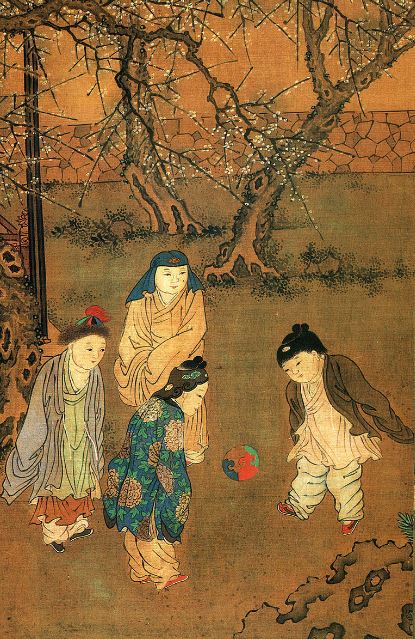The history of football is a lot older than you think. Although there are other prehistoric forms that are similar to football, the ancient Chinese are generally credited with the world’s first “kicking ball” sport, the tsu chu (or sometimes spelled as “cuju”). There have been debates as to when exactly this game was developed. While some historians state that Tsu Chu was invented approximately 255 – 206 B.C., others suggest that it was invented further back in time – around 5000 B.C.!
The actual romanized spelling of tsu chu is “Ts’u-chü,” which literally means “kick ball” in Chinese. When it was first played, the use of hands was strictly forbidden, just like in modern football. However, the players could use their feet, heads, backs, shoulders, and chests to hit and bounce the ball while avoiding their opponents’ attacks as they were attempting to go towards the goal.
Like modern football, tsu chu is a highly competitive sport that also involves the use of a net as the place to score a goal. But unlike in football, where players kick the ball towards the open-wide goal net, tsu chu involves kicking the ball through an opening into a net, which is believed to have been quite small, measuring 30 to 40 centimeters in diameter. The original ball played in this sport was made of leather and stuffed with feathers.
Tsu chu was first invented during the Han dynasty. The first recorded mention of tsu chu is in an ancient text titled Zhan Guo Ce, which was produced during the “Warring States” era. During the Han Dynasty (206 B.C. – 220 A.D.), another text titled Records of the Grand Historian also mentions this game.
Tsu chu was extensively played during the Han dynasty. Its popularity escalated and spread from the military to the royal courts and upper classes. Even the Han dynasty emperor Wu Di was also a great fan of the game. After his conquest of Central Asia, he ordered that all the best players move to the capital so that he could watch them play. He would frequently sit at the palace courtyard to watch a game of tsu chu. Because he couldn’t seem to contain his love for the sport, he ended up playing a few games as well!
As tsu chu’s popularity reached its peak, the games became standardized, and official game rules were established. Most of the matches were held within the palace grounds, which were quite vast. A type of court, called “ju chang,” was built particularly for tsu chu matches.
Some other elements of tsu chu saw additional modifications and improvements. The original feather-stuffed ball was eventually replaced by a newer air-filled ball with a double-layered hull. Two types of goal posts also came: one was made by setting up posts with a net between then, and another one with one goal post in the middle of the court.
As it had become a favorite sport among the royal members and the aristocrats, tsu chu was usually played at the back of large mansions apart from within the palace grounds. Some members of the royal court could take the role of scorekeepers if they failed to show any skill in the game.
Because of the improving social and economic conditions during the Song Dynasty (960 – 1279), more people from different classes and walks of life were now able to enjoy tsu chu, either as spectators or players. Players from different backgrounds could participate in tsu chu matches. As the sport was rising in popularity, several tsu chu clubs began to emerge, especially in large cities, as well as national championships, which were organized and held every year.
In these clubs, the members either consisted of professional players or just enthusiasts of the sport. For non-professional players, they were required to appoint a professional as their mentor and pay a fee to become members. Once qualified, new professional members were now assured of income.
Recently in China, there has been a resurgence of interest towards tsu chu. While it is considered as the earliest frontrunner of the today’s football, tsu chu (or any other similar prehistoric games) did not have a direct influence on modern football as we know it. So, we must look somewhere else for the true origins of modern football.
